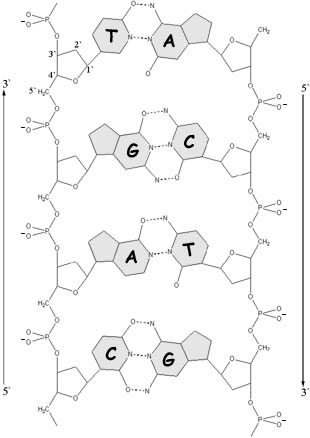|
One danger in any information-storage system is
that the information will become faulty or garbled. Some of this
danger is lessened in DNA by having the "message" protected
by a second strand running in the opposite direction, with the bases
on the two strands paired in a complementary manner. Each purine
on one strand is paired with a pyrimidine on the complementary strand
in a highly specific way: A only with T, and G only with C. The
result is a ladder molecule, as shown on the right,
with the 5`-to-3` direction different in the two uprights of the
ladder, and with purine-pyrimidine rungs. Because of the specific
A-T and G-C base pairing, each strand has exactly the same information,
although in a slightly different language. This is what is meant
by saying that the two strands are complementary. Right: The four bases of DNA, paired as shown on the next page, are the four letters in the alphabet of the genetic code. The paired bases are the rungs of a DNA ladder, with a 5`-to-3` chain arrangement of the two sides of the ladder running in opposite directions. |

|